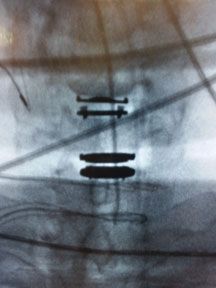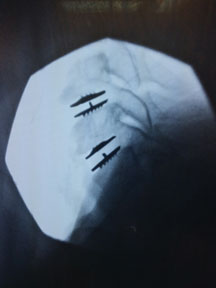Findings show 5-year results with two-level cervical TDR were superior to ACDF
The 5-year clinical results of a prospective study in which patients with symptomatic degenerative disc disease were randomized to undergo either two-level cervical total disc replacement or two-level anterior cervical discectomy and fusion showed patients treated with cervical total disc replacement had statistically greater improvement in key outcome scores, including the Neck Disability Index.
The study was conducted at 24 centers. In all, 225 patients underwent cervical total disc replacement (cTDR) and received the Mobi-C cervical total disc replacement device (LDR Holding Corporation) and 105 patients received anterior cervical discectomy and fusion (ACDF). According to details of the study in Journal of Neurosurgery: Spine, the follow-up rates at 5 years were 90.7% in the cTDR group and 86.7% in the ACDF group. According to the investigators, these rates were comparable to those in similar studies.
Investigators found overall success rates of 61% for the patients who underwent cTDR and 31% for the patients who underwent ACDF, which was a statistically significant finding based on the FDA composite outcome measure for success used in the study.
When indicated, cTDR proved safe
Kristen Radcliff, MD, the study’s first author, told Spine Surgery Today, “My fellow authors and I are happy to present the first report on the 5-year Investigational Device Exemption data for two-level cervical arthroplasty. The quality of data collection and excellent follow-up rates provided a good basis for our study and allowed us to publish meaningful findings. As we concluded in the paper, comparing cTDR and ACDF, disc replacement resulted in statistically significant greater improvement in some general and disease-specific outcome measures compared with ACDF. Additionally, there was a lower incidence of index level and adjacent level reoperation with cTDR. For carefully selected patients who met inclusion criteria, two-level cTDR was safe and effective with a lower rate of related adverse events compared with ACDF.”

Images: Radcliff K

Among the patients in the cTDR group, Radcliff and colleagues found the incidence of index and adjacent level reoperations was lower than that of the ACDF group; however, the differences were not significant between the adverse incident rates of the groups.
Degeneration at adjacent segments
As for adjacent segment degeneration rates at 5 years, these were lower at the superior level to where the cTDR devices were placed at 32.6% compared with 70.8% in the ACDF cases. The rates of inferior level adjacent segment degeneration at the same amount of follow-up were 22.4% for the cTDR cases compared to 55.1% for the ACDF and these difference were statistically significant, according to the study findings.
Based on the Neck Disability Index (NDI) findings, NDI scores for both groups improved significantly at all time points from baseline. However, at 5-years postoperatively, the patients in the cTDR group showed a greater mean improvement in NDI scores (-37, SD 20) than the patients in the ACDF group (-28, SD 18). – by Susan M. Rapp
- References:
- Radcliff K, et al. Journal of Neurosurgery: Spine; 2016;doi:10.3171/2015.12.SPINE15824.
- For more information:
- Kristen Radcliff, MD, can be reached at Department of Orthopedic Surgery, Thomas Jefferson University, Rothman Institute, 2500 English Creek Ave., Egg Harbor, NJ 08234; email: radcliffk@gmail.com.
Disclosure: Radcliff reports he is an unpaid consultant for 4 Web Medical; board or committee member for ACSR; paid consultant for Altus Spine; paid consultant, research support, and unpaid consultant for DePuy, a Johnson & Johnson Company; intellectual property (IP) royalties, paid consultant, and research support from Globus Medical; unpaid consultant for LDR; paid consultant and research support from Medtronic; other financial or material support from NEXXT Spine; other financial or material support from NuVasive; paid consultant for Orthofix Inc.; IP royalties and paid consultant for Orthopedic Sciences Inc.; research support from Pacira Pharmaceuticals; research support from Paradigm Spine; and other financial or material support from Stryker.
